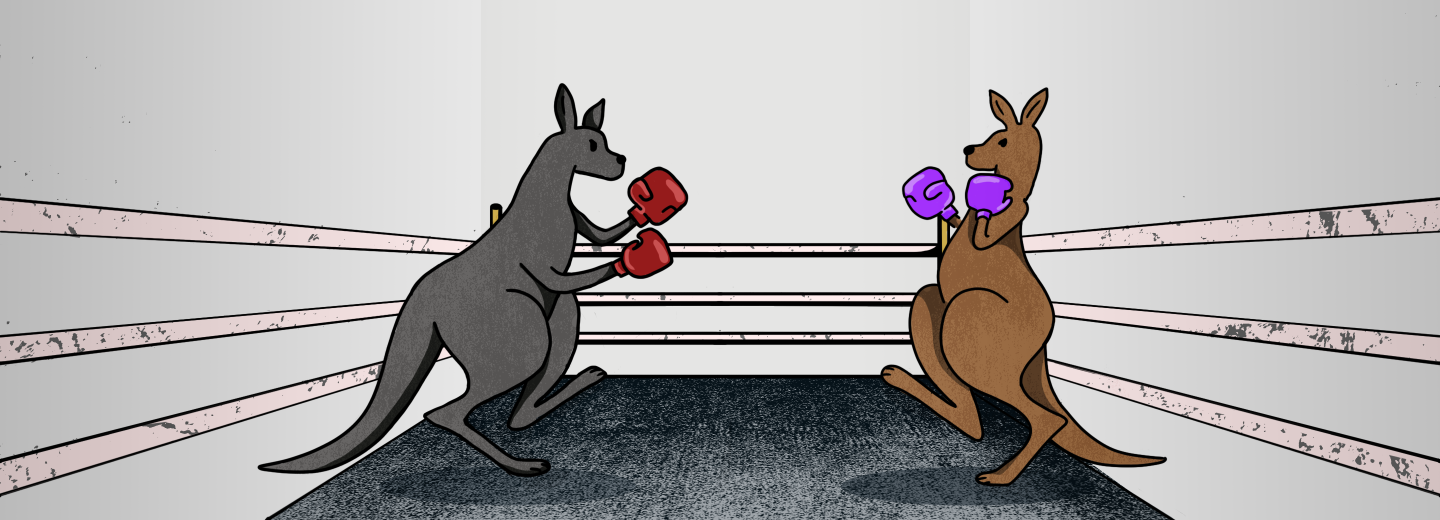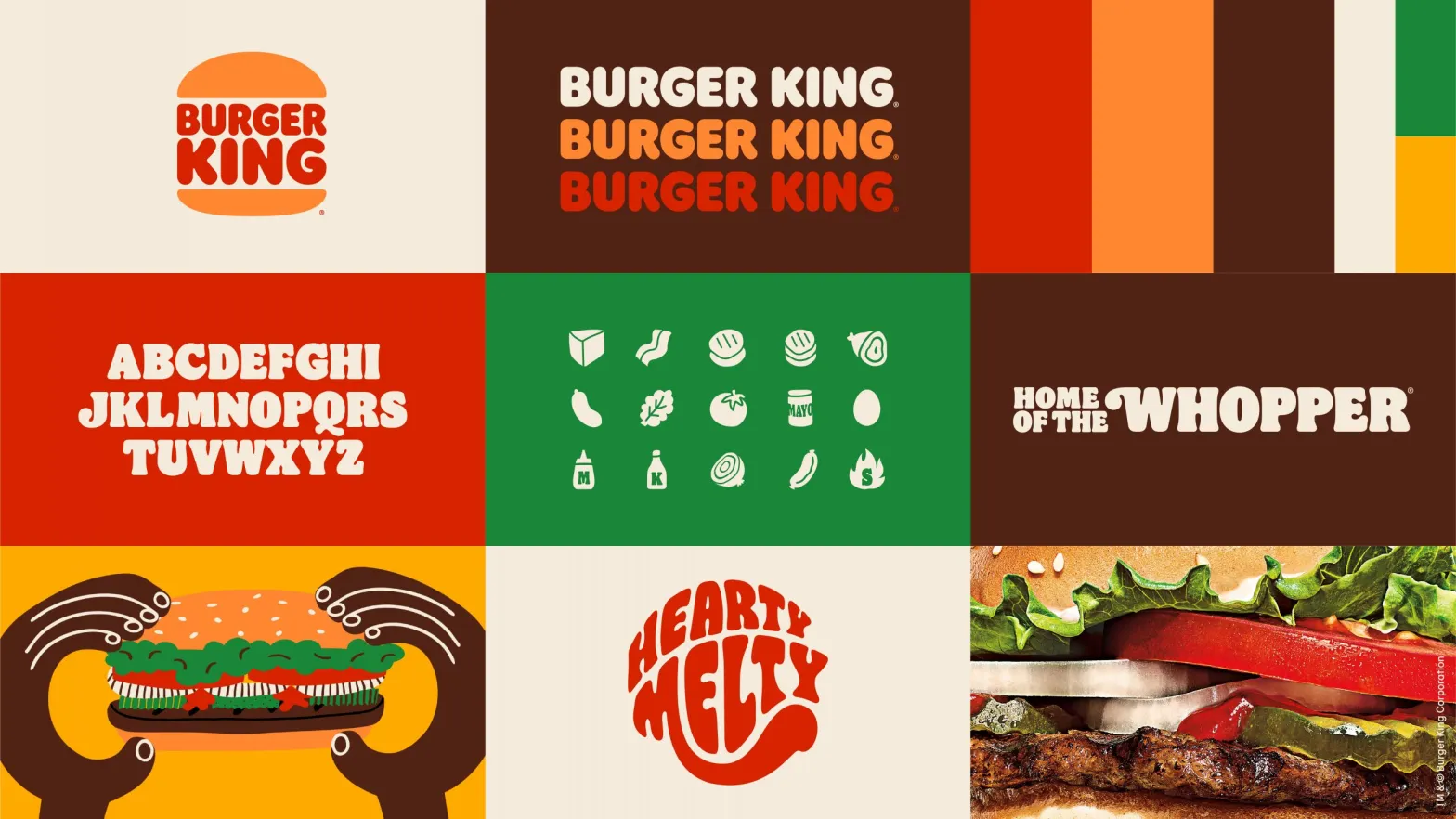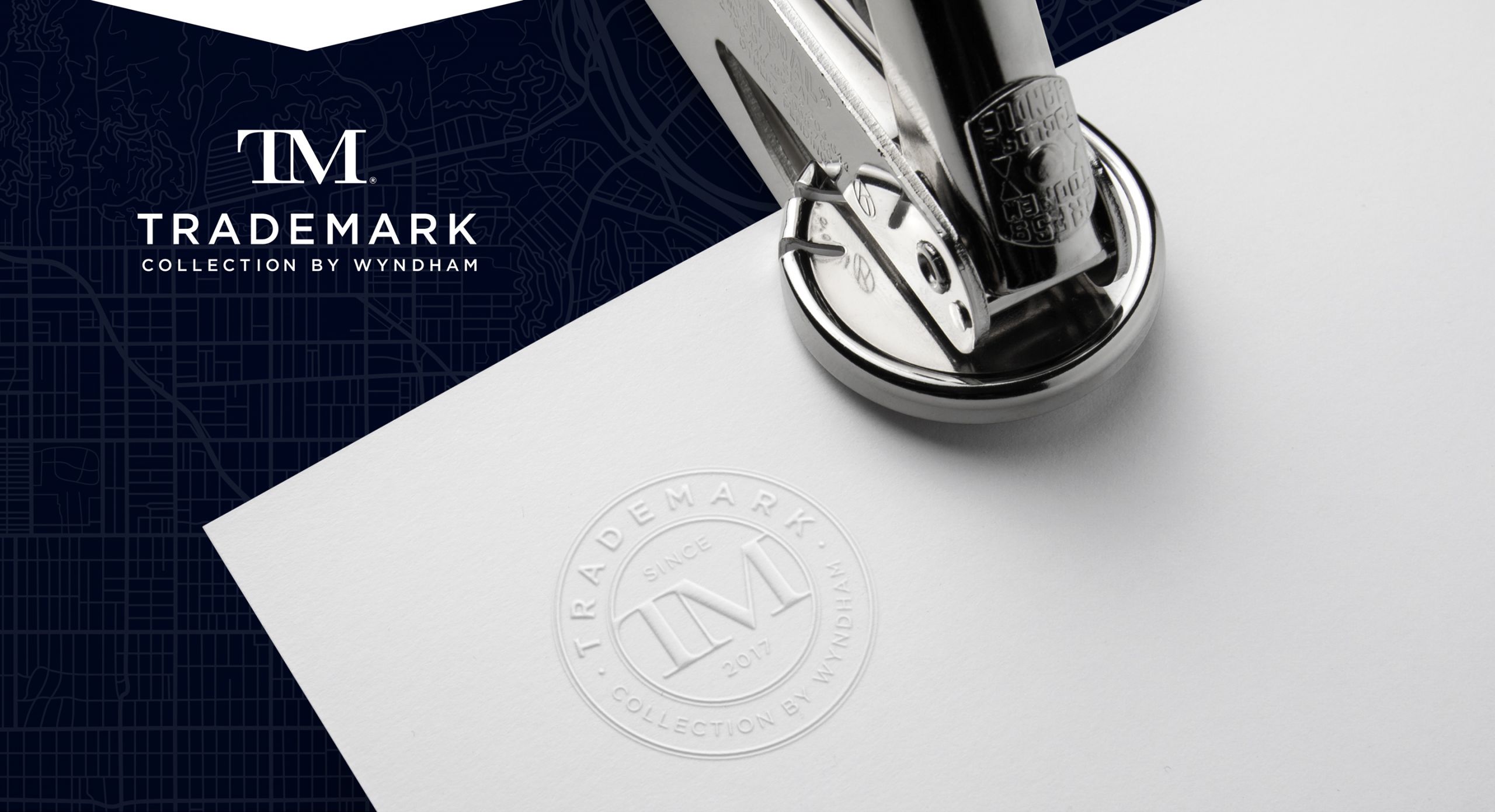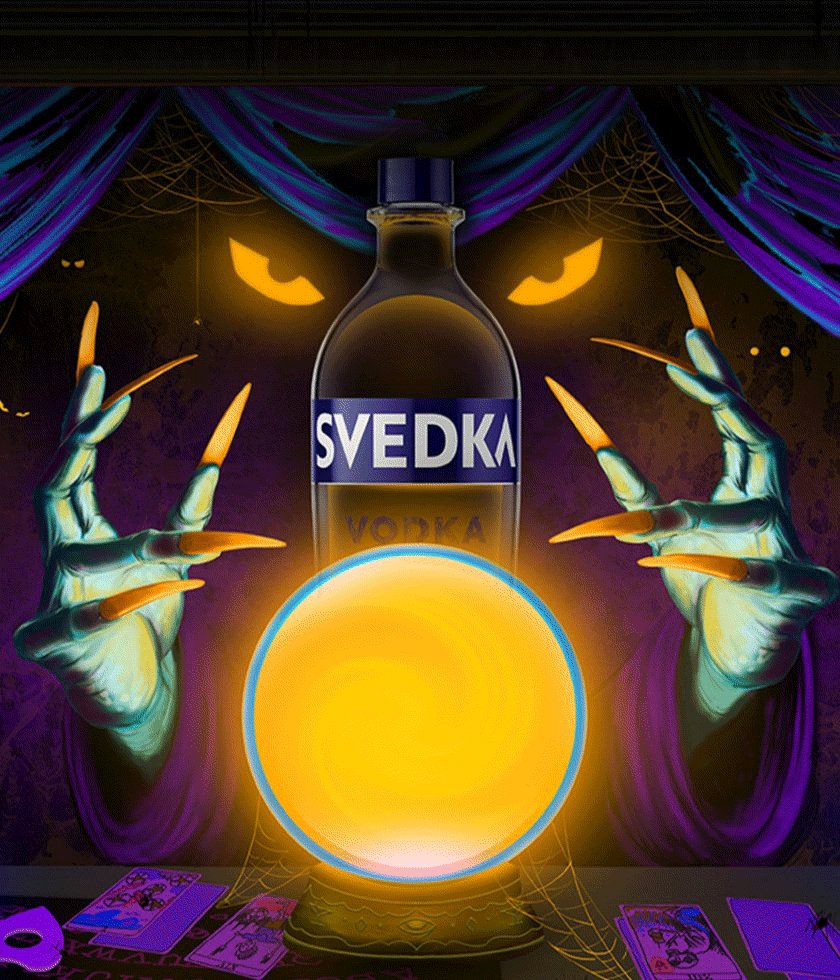Challenger Brands: everything you need to know

Following is an overview on challenger brands, what they have in common, and tips for how they succeed within the world of branding.
What is a Challenger Brand?
Challenger brands are underdogs and up-and-comers that are driven to capture some of the market share that industry leaders, or established brands have already acquired. The challenger brand mindset is shared across industries and is underlined by desire, unparalleled drive, and courage.
Brands who fall below market leaders are not all Challengers by default. It is characterized by a unique mentality and mindset.
Having worked with both market leaders and challenger brands, we’ve noted the significant differences and have created an opportunity for brands to leverage the learnings of the best in class, but the spirit and drive of the underdog. Regardless of stage, size, or mindset, brands need to remain distinctive and consistent in their approach.
Market Leader key brand learnings
Everyone wants to appear like “Apple”. From a branding perspective, they are meticulously considering the user experience whether it’s in-store or online, whether you’re opening a box or interfacing with software. Apple’s design and aesthetic is user-centric and extraordinary. That said, it’s not magic. There are a few core branding principles that Apple and any challenger brand should (and can!) use.
- Sweat every detail: Whether you are a market leader or a challenger, every detail matters. This means if you are part of a scrappy marketing team of three, or a robust team of thirty, never underestimate any single detail. Just because Apple can afford to create premium, highly engineered packaging doesn’t mean that a challenger couldn’t create something equally as stunning, perhaps more distinctive and less expensive. From paper and tactile materials, to recyclability, to the storytelling and feeling you get when you unbox something however, detail must be top of mind. Apple considers typography, color, white space, foils, and heroic logos paired with layering, discovery and delight, but none of these considerations are proprietary. The key piece for pairing with a challenger mindset is that you have to do it differently—different paper, different unboxing—but this presents a huge opportunity to disrupt and stand-out.
- Consistency is essential: This seems like such a simple concept, yet in today’s completely complicated omni-channel strategy, consistency has become increasingly more difficult. Why is it important? It (literally) builds muscle memory for your consumer, and it builds trust. Brands like Apple have nailed this. Disney is another example of a brand that is masterful at consistency. From apps, to cruises, to on- and off-property hotel rooms, to theme parks, and toy aisles, the Disney brand is incredibly controlled. As challenger brands establish their positioning and ready themselves for a push, do it consistently. Challengers will need their budget to go farther and their impact to be big. Consistency will help with this by creating a seemingly larger impact as opposed to many smaller, inconsistent ripples.
As an aside, omnichannel inconsistency is rampant because larger brands are bringing in multiple companies and are utilizing multiple channels to push their brands out. Most of these giants do not have a branding company at the helm. Traditionally, an internal brand team is not versed on the nuance and creative execution of brand guidelines and may inadvertently contribute to inconsistency. Challenger brands? Consider leaning on your brand partner to create simple templates and toolkits so your team can be better armed, or alternatively, consider having your branding firm oversee all work other partners create.
- Trust your gut… not the numbers: Big brands test. They pay big money for market research, and they bake time into campaign development to test their campaign on their target audience. While there are cases of this being wildly successful, this also can backfire and lead to watered-down work. It pulls controversy and surprise out of the campaign, and while its aim is to reduce risk, it frequently reduces the quality of the work. What have we seen with successful challenger brands? An ability to accept and manage risk and teams who take chances, trust their gut, react to great ideas, and push work to be special. Disruption is one of the key tenets to successful challenger brand positioning—embrace it.
So, while being a challenger brand is a mindset, it is important to keep studying the market leaders. They got there by doing some things right!
The term Challenger Brand?
In 1999, Adam Morgan authored the book ‘Eating Big Fish: How Challenger Brands Can Compete Against Brand Leaders’. Adam goes on to identify three specific criteria used to identify challenger brands:
- State of market: the brand is not a market leader nor a niche brand
- State of mind: the brand has ambitions beyond conventional marketing resource
- Rate of success: the brand has experienced significant and rapid growth
In an interview with Adam in 2018 featured on the blog and podcast website ‘How Brands are Built’, interviewer Rob Myerson digs into some further aspects of the book. In the quote below from the podcast Adam speaks again to the mindset of a Challenger Brands:
“I define a challenger brand as… [being] about mindset and attitude rather than state of market. Simply because you’re a second, third, or fourth rank brand doesn’t make you a challenger. Lots of people say that it does but it doesn’t. It’s really about, do you have business ambitions that are bigger than your conventional marketing resources and are you prepared to do something bold and ambitious to kind of close the implications of that gap?”
Following the publication, numerous authors have subsequently created content that further defines Challenger brands; from archetypes to ways to create a challenger narrative. In this article on The Challenger Project website, they analyze the top ten challenger brands from the last decade and capture the “stories” that those brands adopted to find success. While using sources like this to help inform your approach can be a great starting point, remember that challenger brands are successful because they zigged when someone else zagged—so make sure your approach is authentic to your brand.
As the Challenger brand vernacular has rooted itself into marketing culture we’ve seen more coverage that helps to feed this mindset. In fact, Adweek has gone on to host an annual Challenger Brand Summit where speakers provide insights for both market leaders and challenger brands, since arguably they are all competing for the same consumer. In this forum, it was notably stated that “Legacy brands with well-established names and challenger brands breaking into the space must stay equally competitive to gain and retain a loyal audience.”
Studying the coverage on challenger brands and their approach to disruption can be a fabulous tool for marketing teams working on their own strategy.
Disruption and getting the story right
We talked about consistency and attention to detail, and whether you are developing your branding or extending it, these need to be the backbone of your strategy. But the other thing you need to create is something stand-out, distinctive, and memorable. You do that by working with a branding firm that has artistic chops and understands the practical needs of modularity as you scale.
In an article on CHRON, author Neil Kokemuller points out that many challenger brands focus on a point of differentiation. He talks about how Dyson came up with swivel technology to navigate around tight areas and furniture when vacuuming. This is a nearly obvious way to differentiate, but what if you are making a commodity that doesn’t have a real product differentiator? Enter branding. Now your services and consumer experience needs to be disruptive. Neil goes on to talk about the importance of branding to a challenger strategy: “Companies build brands using memorable names, symbols such as logos and other images and phrases. Catchy slogans, for instance, sometimes become strongly connected to your brand so that people easily recall the brand after hearing the slogan.”
When we are working with clients to boost memorability and market share, we dig into the brand and the tiny details that might have been missed by the marketing team because they are so woven into their culture, they don’t even consider them to be something that might resonate with a consumer. It’s these truthful nuggets that can really help you stand out.
What does a marketing team look like at a Challenger Brand?
It looks a lot like a marketing team anywhere. The roles are the same, the titles are the same, but the mindset is different. Teams working on these types of brands have a tendency to be competitive, goal oriented, driven, and at the heart of it… confident. They need to be able to make a difficult decision, and one that may be somewhat risky.
They are also traditionally managing a smaller budget than a market leader. They need to do more with less. They need to be creative and think outside of the box. They work best with a branding firm that does the following:
- They think like you do. You want a branding firm that is nimble, who can pivot quickly based on ongoing learnings, one that can approach projects creatively so that money can go farther, and one that doesn’t come up with cookie-cutter solutions.
- They prioritize consistency. Remember when we talked about the importance of consistency in building muscle memory and stickiness? Your branding team needs to understand this. Pick a boutique <25 person team where you know you will have a consistent Creative Director and writer on your work. You need your partner to protect your brand like you do.
- They sweat the details: You are part of a lean team that is choosing to put money into marketing buys and experiences rather than overhead. Your small but mighty team needs a branding firm that helps you with the lift. You cannot be looking to make sure brand assets are being used consistently and that all of the work is not only on-brand but also building it. Your partner must never gloss over any detail. From consumer facing to sales materials, to internal communications. The details matter.
Tired brands and ones that want to challenge the status quo
Not all challenger brands become the next IKEA, or Airbnb from launch— many that share the challenger mindset have had a different journey, one that might have taken a lot longer. We call brands that have been around the block “established brands.” The life of a brand can be a many-phased one and in some cases, a brand may have at one point been the leader but lost their way. Many factors can lead to losing market share and favor from market factors, to budget challenges, to changing vision and leadership, to unforeseen situations. But through a strategic repositioning where you look at the marketplace with fresh eyes—a brand can reinvigorate and refresh, ultimately getting back on track.
These established disruptor brands have a great opportunity to leverage all of their many learning and history, and with the right branding partner, can elevate the heritage of the brand while injecting new life to it. They may also have a different relationship with a consumer, an existing one, and challenging the status quo needs to consider this.
A refresh versus a rebrand
Refresh
Many of these established brands have heritage and roots that run deep. During a refresh as a branding firm, we would look closely at the foundation of the brand and identify what is still relevant to the audience. We would leverage those attributes when looking at the brand’s assets. We’d also consider the new positioning and company’s goals to better understand how the client wants to challenge the marketplace, and would then inject some fresh assets to help achieve that.
Successful refreshes are still recognizable to a core consumer, as they have details and cues that indicate something has changed. This can be accomplished through visual elements, and also personality and copy. As brands have shifted from cold corporate entities to more approachable and authentic, many have struggled to keep up. Forbes digs into how our consumer has changed, stating “The modern customer is smart, tech-savvy and research-oriented. Today, consumers can observe you, even when the spotlight is off.” They go on to talk about why authenticity is important and how consistency is crucial (See? Here it is again!) They also cite research from a Harvard Business Review article, noting that “‘Fully connected’” customers are worth 52% more than ‘highly satisfied’ customers.”
If you are considering a brand refresh make sure you hold on to the parts of your brand that are your heart and soul, inject new components that resonate with your consumer and that are in support of your refreshed positioning, and finally, make sure you stay up to speed on your consumer.
Rebrand
A rebrand, on the other hand, is a different path. Many times we see these overhauls happen due to unforeseen culture shifts and company missteps. One example is Lumber Liquidators, now LLFlooring, who went through a massive rebrand—in this case, regretting the name “liquidators” as it inadvertently eroded their positioning of being a quality floor source. In the PR article here they talk about the rebrand and launch of a new campaign. Aside from the name, LLFlooring battled consumer skepticism from a 2015 scandal. Both of these reasons led to a brand overhaul. Another great example of a rebrand is Burger King seen here on The Dieline, done by JKRGlobal, where they overhauled the identity of the long familiar restaurant chain. Fast Company cites it as a major rebrand where “The home of the whopper just got a lot more fun.” In this case, a lagging brand needed an injection of attention, so more drastic moves were implemented.

Unbranding and its role in the challenger mindset.
First off, what is unbranding? Natalia Formosa, Senior Brand Manager at Coty does a great job explaining the unbranding trend, first cited in 2018 though still lingering. The root of the idea is that “less is more” or “that which is of smaller quantity could be of higher quality” according to Wiktionary. Wiki goes on to connect it to the art movement Minimalism led by Ludwig Mies van der Rohe.
We use this “less is more” expression in branding frequently—not from the artistic angle of minimalism, but specifically when we are articulating a story. The average consumer looks at a billboard for less than 6 seconds. And in a grocery aisle, they might look at a package design for even less. We are competing with an increasingly cluttered space when it comes to gaining our consumers attention. “Less is more” forces us to tell a succinct and powerful message. It forces both the client and the branding firm to get to the heart of what they are trying to communicate.
We believe “less is more” will remain timeless when it comes to communication and snappy messaging, but feel developing an identity guided by it could leave you wanting more. When revitalizing an established brand to take on a changed landscape or creating a challenger brand identity from the ground up, avoid unbranding and getting lost.
Why minimalism in challenger branding can be dangerous.
We have spent a little time in this article talking about consistency and how difficult it can be when we are exercising an omnichannel strategy. This challenge has led to brands over-simplifying to keep things simple—moving towards adaptable fonts, basic layouts, and monochromatic, stripped-back palettes that can easily go omnichannel. However this is creating a new problem, and that is brands all looking the same.
Brands are afraid of being too distinct, and putting a stake in the ground in case they get picked apart as feeling inauthentic. There is a feeling that if you have a more basic, stripped-back identity you can still layer on the storytelling and if you are a market leader, this is true—you have the budgets and bandwidth to consider a multipronged PR/influencer/content strategy to help you create a multifaceted, exciting brand. But as a challenger, you need to get it right with less. Do something one-of-kind. Be unmistakable. Don’t fall into the trap of overly-simplified, generic branding. Take a risk, tap into artistry, custom fonts, brave colors, and something that gets noticed. And make sure you are working with a branding firm that ensures that it is coming from an authentic and true place.
Refresh your brand strategically, considering your positioning, market goals, and the competitive set to create something ownable that can garner love and attention, and recall.
Soft branding and its role in challenger branding.
An innate part of being a challenger brand is that you see a market opportunity and go for it. An example of this is a soft brand strategy that Wyndham Hotels + Resorts activated for one of their hotels, the Trademark Collection. If you are new to the term, and to quote ourselves… “A soft brand is an independent hotel that joins a chain while maintaining a strong sense of individuality and independence.” Demonstrating this strategy’s success, PR News Wire explains “Trademark Collection by Wyndham is the Company’s fastest-growing brand, and experienced a 19% growth in rooms year-over-year as of December 31, 2019. The growth comes at a time when soft brands have strong appeal for independent owners seeking the support of a branded partner as the travel industry prepares for recovery of domestic, leisure travel. With Trademark Collection, hoteliers gain access to Wyndham’s 83 million Wyndham Rewards loyalty members and the company’s global distribution network without having to sacrifice their properties’ own unique branding and identities.”
Brigade worked with Wyndham Hotels to create the soft-branded Trademark Collection and its supporting campaign. In this case, we considered the stand alone identities of each of the many hotels in the collection. Some were fanciful, some classic, some modern and we took all of these into consideration when creating the Trademark identity. We leverage simplistic typography that was refined and could take a backseat as needed to these existing brands, but that could also take the helm if needed. Our goal was to create a system that unified all locations under the Trademark Collection brand, while allowing franchisees to express the unique personality of their properties. In addition to a logo and property lockups, we created on-premise collateral, advertisements, and digital and social materials.

When working with a branding firm, make sure they strategically understand the vision of your challenger path and that they know how to help you accomplish it. Many branding firms lean heavily on graphic design and not brand strategy—make sure your partner understands the difference and can capitalize on both.
Choosing a branding firm for your challenger brand.
How do you choose the right branding partner for your engagement? And how do you compare them to each other? Below are the things that our client roster has identified as important. Many of our clients have been with us for 6+ years, so adapting to their changing needs and keeping up with their growth is a crucial cornerstone. Here are some of the others:
Chemistry
This is cited as one of the leading reasons why clients choose agencies. Forrester has done a four part blog called Got Chemistry? How to Know if an Agency is “The One”, with great thought-starters and tips on evaluating an agency. What we have found is that many people use the language “we had great chemistry”, but upon digging deeper, this actually boils down to a mutual respect and a shared feeling that the other party was “smart” or “strategic”. People want to admire the people they work with and like them as human beings. In your early conversations when vetting possible partners, consider your rapport and how you get along: Could you brainstorm together? Could they spend time with your team? Did you think they were smart? As a Challenger brand you need a partner that will not just keep up with you, but keep you on your toes!
Agility and Nimbleness
Challenger brands do best with smaller boutique agencies who, to some degree, are challenger brands themselves! Find a team that is less than 25 people, and that works closely with each other to achieve their clients success. These smaller teams can pivot as you need, better achieve quick-turn projects, and can bulk up for larger impact assignments. This ability to meet your pace and be able to change gears swiftly is a massive asset for a brand that is always on the move.
Varied skill set
Challenger brand marketing teams have a massive range of diverse projects. Find a team that revels in the variety and that can help you connect the dots consistently no matter the channel. At Brigade, leveraging our founder’s background in both advertising and technical graphic design design, we tackle projects from packaging to production (helping someone get on shelf), to traditional and digital advertising campaigns (driving sales), to dynamic retail programs and loyalty loops (on and off premise) to sales tools, sell sheets, and internal materials. A branding agency’s core competency should be around creating distinctive brands, guidelines and toolkits, and establishing consistency—so using them to then extend the brand becomes seamless and second nature.
Pricing and Focus
Acknowledging that there are many different ways to get from point A to point B, great clients guide brand firms’ pricing structure. Are you having them price out a high value assignment where you want their best and brightest developing your strategic creative platform? Or are you having them do some block-and-tackling for the sales team? Tell them and help guide the investment. In fact, consider having them propose a path based on your ideal budget—the more you can speak openly about costs and investment, the better armed everyone will be.
Comparison shopping
RFP’s have a bad wrap. For our agency, the average RFP process costs us around $15,000 in time and resources, while at larger agencies, that can be a fraction of their investment. It becomes clear how this process has lost favor. However, when you are shopping for a firm, truly think about what you are going to use to evaluate the winning team. Consider speaking with references on their current or past client side. Read third-party verified reviews on a site like Clutch.co. Dig deep into their portfolio, really understand what they did for some of their existing clients. Explore the tenure of both their employees and their clients: why have people left? Pricing is a factor, but with more transparency and “getting to know each other”, pricing can often be adaptable.
Challenger brands’ tenacity and ability to manage risk make them a fabulous, invigorating partner for a small, nimble team. Find your right partner and get noticed!
BRIGADE is an independent branding firm with 20 years of expertise creating distinctive identities and promotions. We merge design mastery with advertising strategy to help mass-market food, beverage, and wellness brands boost memorability and market share.


